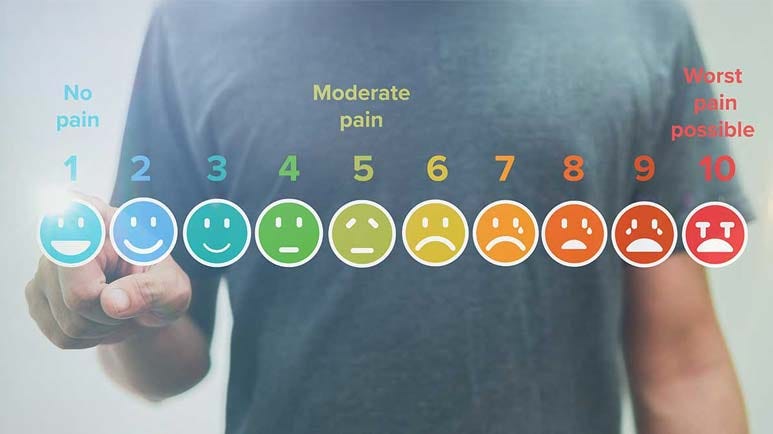The Mind-Body Skills That Help You Stay Active Through Chronic Pain
Description
STORY AT-A-GLANCE
Chronic pain affects over 50 million U.S. adults, but research shows that pain resilience — your ability to adapt and stay active despite discomfort — matters more than pain severity itself
Pain resilience acts as a mental shock absorber, helping people maintain physical activity even with significant pain, while fear of movement has weaker influence when resilience is present
Five components define pain resilience. These are emotional self-regulation, psychological flexibility, self-care behaviors, religion and spirituality, and internal strengths like optimism, persistence, and problem-solving skills
Building resilience requires practical daily habits, including consuming healthy carbohydrates for energy, training your brain toward optimism through reframing challenges, and learning new skills or hobbies
Physical activity and quality sleep strengthen resilience. Walking around 8,000 steps daily improves metabolic health and pain management, while good sleep helps you handle stress

Chronic pain affects more than 50 million adults in the United States,1 making it one of the most common and costly health problems today. It’s not just about the discomfort experienced every day — given enough time, pain reshapes how you move, think, and live.
What’s worse is that many people assume the pain itself limits activity, but new research2 shows that there is a light at the end of the tunnel. How you think about pain determines whether you stay active or withdraw from life. In other words, how you perceive pain and work through it can positively affect your life and keep you moving despite the setbacks.3
Pain Resilience Shapes How You Move Through Chronic Pain
In a study published in PLOS ONE, researchers sought to answer this question — why do some people with chronic pain stay active while others become sedentary, even when their pain levels are the same? To start, they investigated how two psychological factors, pain resilience and fear of movement, influence the relationship between pain and physical activity.
Their goal was to understand whether these traits act as links that explain why some people maintain movement despite discomfort, while others limit their activity and lose function over time.4
The study focused on adults living with long-term musculoskeletal pain, which includes conditions like chronic back, neck, shoulder, or joint pain. Using questionnaires, the team measured pain severity, fear of movement, physical activity, and pain resilience. By analyzing these variables, they discovered that resilience, not fear, was the key factor keeping people active.
Pain resilience refers to your capacity to adapt and function even when pain is present — It’s not about ignoring pain or pretending it doesn’t hurt. It’s about how quickly you regain balance after pain flares up, how you interpret the experience, and whether you still pursue meaningful activity.
<label class="hide-text" contenteditable="false">Text within this block will maintain its original spacing when published</label>Participants with higher pain resilience remained more physically active, even with significant pain. In contrast, those who were fearful of pain-related movement were less active, but that fear alone didn’t explain the whole story. When resilience was added to the equation, it overshadowed fear’s influence.
Resilience acts like a mental shock absorber — When you’re resilient, you recognize discomfort, pace yourself, and still move forward. The researchers showed that resilience partially mediated between pain and activity levels. Fear of movement, by comparison, had a weaker effect once resilience was considered.
Analyzing the differences in pain resilience between men and women — Men showed higher resilience and greater activity levels compared to women, even after adjusting for pain severity and age. This doesn’t mean resilience is based on sex — it suggests that social factors, coping styles, and self-efficacy differ between men and women.
Frailty was linked to lower activity levels — However, resilience buffered that effect. Even among frail participants, those who scored higher on resilience measures stayed more mobile. This means cultivating resilience could preserve independence and delay disability, even for older adults or those with multiple pain sites.
The passage of time plays a key role in developing resilience — Participants who had lived with pain for years often developed coping patterns — some adaptive, some not. Those who maintained active lifestyles tended to report that movement helped them feel more in control of their pain.
<label class="hide-text" contenteditable="false">Text within this block will maintain its original spacing when published</label>In contrast, those who had withdrawn from activity described a deteriorating feedback loop — less movement led to weaker muscles, greater stiffness, and more perceived pain.
The results show that the difference between staying stuck and staying strong isn’t the pain you’re currently experiencing — it’s how you face it. The more you build your ability to recover from pain episodes and stay active despite discomfort, the more your body rewards you with strength, mobility, and confidence.
What Defines Pain Resilience?
In another study published in the Iranian Journal of Nursing and Midwifery Research, researchers explored what resilience looks like for people living with long-term pain. Rather than measuring resilience through surveys or numbers, the team asked people directly about their lived experiences. Their goal was to identify the traits, habits, and mindsets that help people continue functioning and maintain purpose even when pain remains part of everyday life.5
The methodology focused on adults who had experienced chronic pain for years. Through in-depth interviews, the researchers found a set of common themes that separated those who endured from those who truly adapted.
Five main components of resilience emerged from the interviews — These are emotional self-regulation, psychological flexibility, self-care behaviors, religion and spirituality, and internal strengths and competencies. Each one represents a different way of maintaining balance, and together they form a blueprint anyone with chronic






